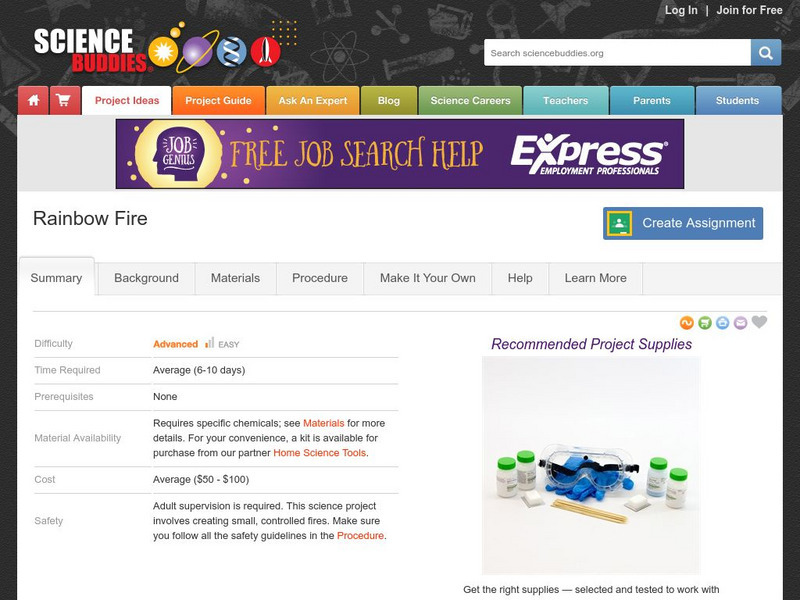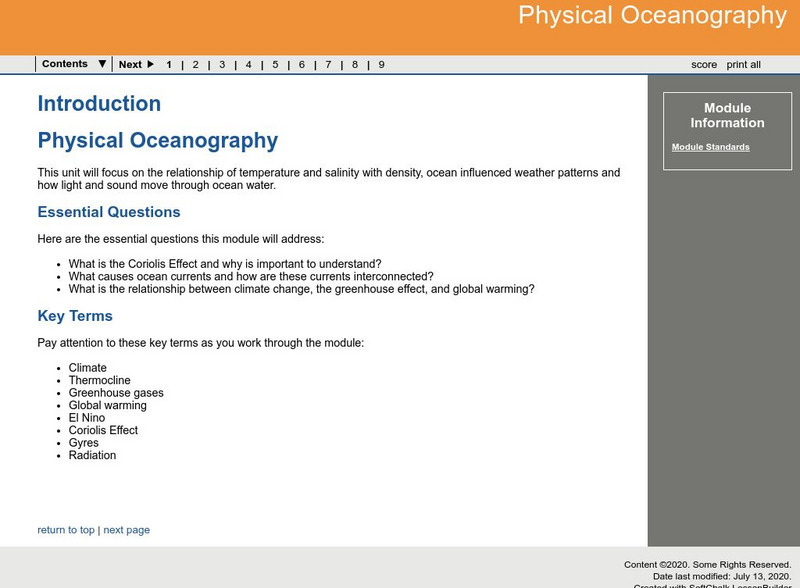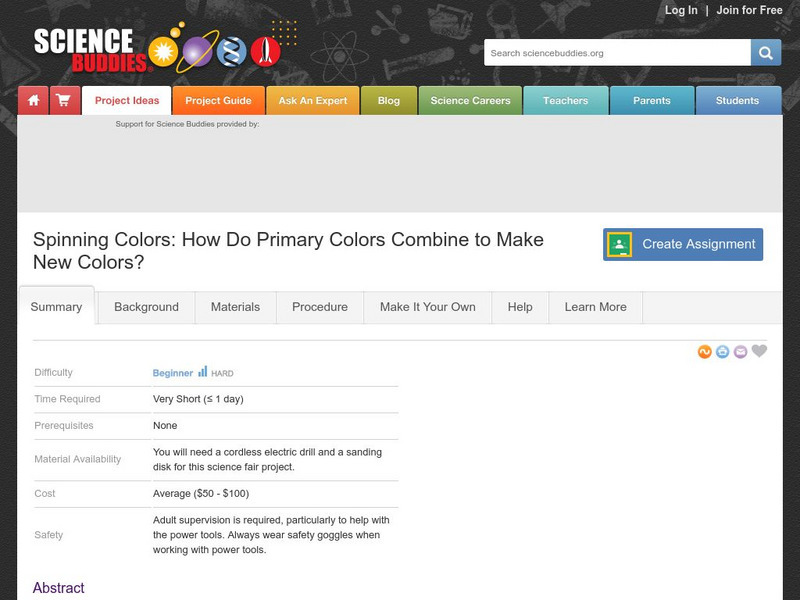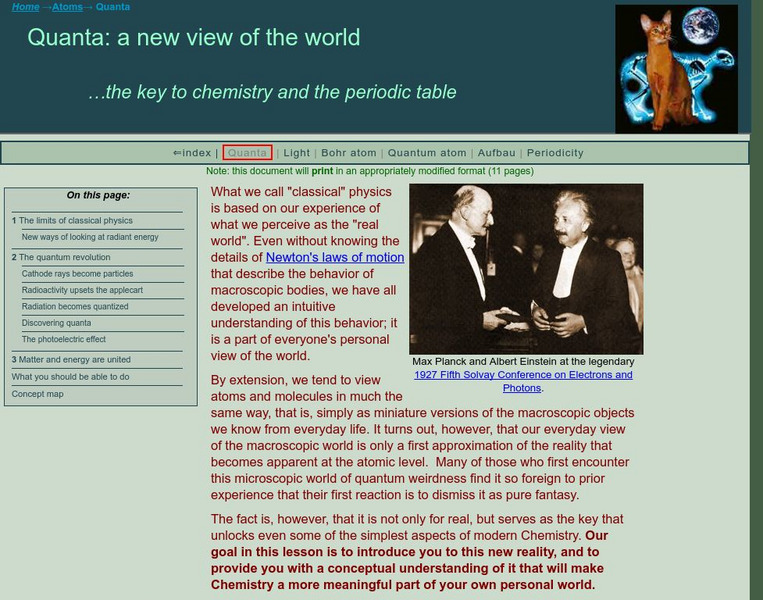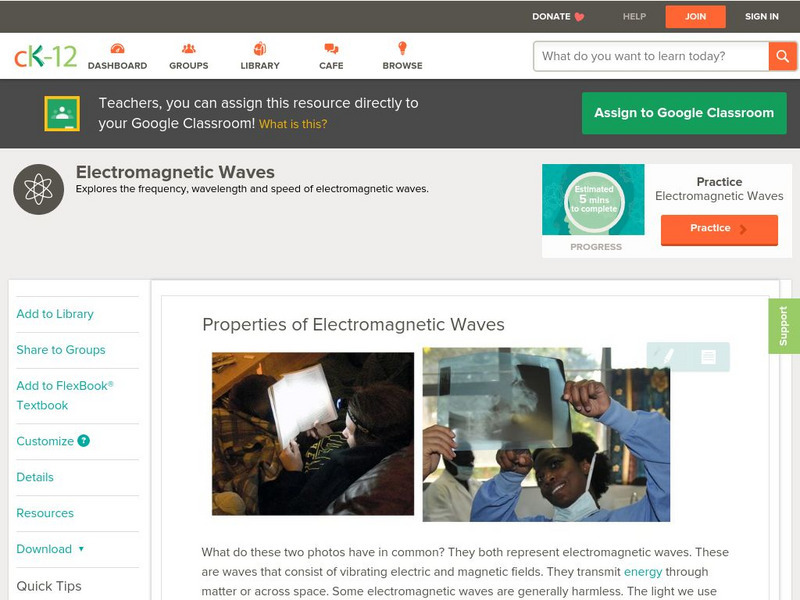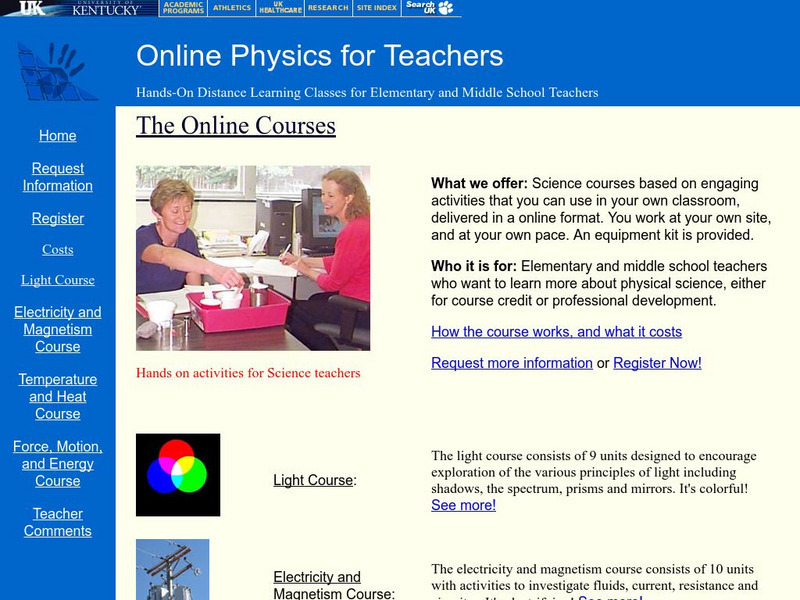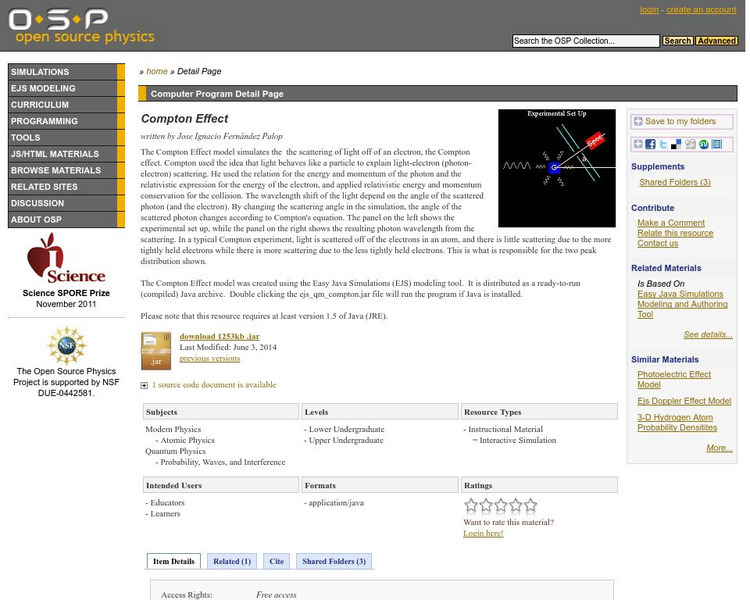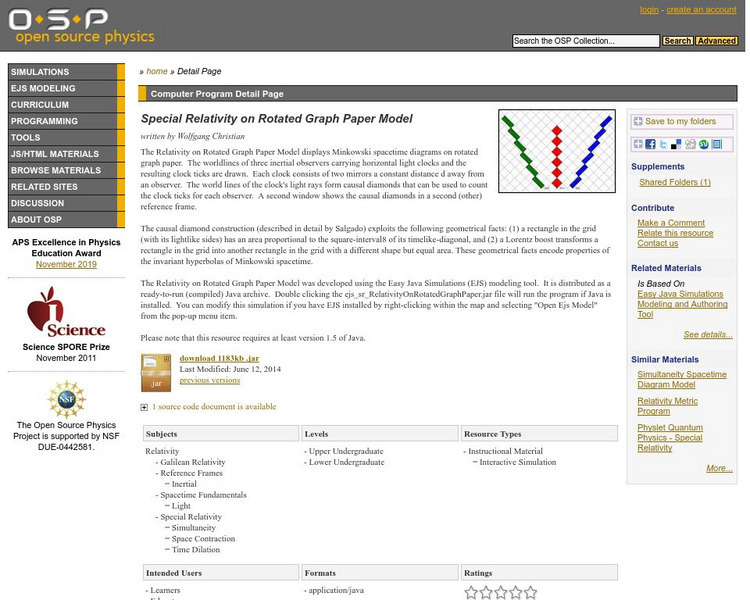Other
Manitoba Education and Training: Physics: Particle and Wave Models of Light
A collection of ideas for teaching young scholars about the nature of light. They learn about the history behind theories of light and the contributions of different scientists. Includes lots of experiments to build their understanding...
Science Buddies
Science Buddies: Rainbow Fire
Astronomers can determine the atomic composition of distant stars by measuring the spectrum of light emitted by the star. Sound cool? Well in this project you can do something similar by observing the color of flames when various...
Nobel Media AB
The Nobel Prize: Nobel Prize in Physics 1922 Presentation Speech
This Nobel Foundation site provides the "Presentation Speech by Professor S.A. Arrhenius, Chairman of the Nobel Committee for Physics of the Royal Swedish Academy of Sciences, on December 10, 1922."
Nobel Media AB
The Nobel Prize: The Nobel Prize in Physics 1918: Max Planck
Use this site to learn about the scientific work of physicist, Max Planck (1858-1947 CE), whose studies in radiation and light earned him the 1918 Nobel Prize in Physics. Read his Nobel Lecture, "The genesis and present state of...
Georgia Department of Education
Ga Virtual Learning: Physical Oceanography
A student learning module with a focus on the relationship of temperature and salinity with density, ocean-influenced weather patterns, and how light and sound move through ocean water.
University of Colorado
University of Colorado: Physics 2000: Spectral Lines
Several pages from an excellent site which describe the science of spectroscopy. The unique atomic emission (and absorption) line spectrum of elements are illustrated and explained. Includes a Java applet depicting the quantum energy...
Science Buddies
Science Buddies: Project Ideas: How Primary Colors Combine to Make New Colors
In this science fair project, paint color pie slices onto a wheel and spin the wheel on an electric drill. See how colors add together to make new colors. The Science Buddies project ideas are set up consistently beginning with an...
Science Buddies
Science Buddies: Don't You Fret! Standing Waves on a Guitar
In this project, you will investigate the physics of standing waves on guitar strings. You will learn about the different modes (i.e., patterns) of vibration that can be produced on a string, and you will figure out how to produce the...
Khan Academy
Khan Academy: Refraction and Light Bending
This article from Khan Academy provides information about refraction and light bending. This information is intended for the Class 12 Physics Course (India).
Open Curriculum
Open Curriculum: The Ray Model of Light
Students will understand the concept of the ray model of light and how light interacts with matter and reflections.
Utah Education Network
Uen: I'm So Bright! I Wear My Shades Indoors!
This instructional activity engages students in learning about light through multiple sources. Students will learn how light is produced, reflected, refracted, and separated. Students will communicate their findings through an...
Utah Education Network
Uen: Enlightening Explorations, Part Ii
This lesson plan engages students in learning about light. Studets will describe how light is produced, reflected, refracted, and separated.
Optical Society
Optical Society of America: Optics for Kids: Exploring the Science of Light
A collection of information on the science of light and optics. Features a wide variety of resources: key events in history, reference materials, multimedia links, optical illusion activities, glossary of optics terms, and information on...
University of Colorado
University of Colorado: Physics 2000: Einstein's Legacy: Microwave Ovens
A series of pages that explain how microwave radiation is utilized by ovens to cook food. Includes several Java applets.
Simon Fraser University
Chem1 Virtual Textbook: The Limits of Classical Physics
Acting as a subtopic of the General Chemistry Virtual Textbook's section on Atoms and the Periodic Table, this site discusses the limits associated with classical physics. Topics covered include light and heat with additional information...
CK-12 Foundation
Ck 12: Physical Science: Properties of Electromagnetic Waves
[Free Registration/Login may be required to access all resource tools.] The speed of electromagnetic waves, their wavelengths and frequencies and how to calculate wavelength or wave frequency.
Wolfram Research
Wolfram Science World: Maxwell, James
This ScienceWorld site describes the Scottish mathematician and physicist James Maxwell (1831-1879) who published physical and mathematical theories of the electromagnetic field.
Art Institute of Chicago
Art Institute of Chicago: Education: Science, Art, and Technology
Six different on-line lectures, with accompanying lessons and project ideas, that discuss the link between art and science.
CK-12 Foundation
Ck 12: Physical Science: Wave Particle Theory
[Free Registration/Login may be required to access all resource tools.] The wave-particle theory and what a photon is, and evidence that electromagnetic radiation is both a particle and a wave.
CK-12 Foundation
Ck 12: Physical Science: Wave Interference
[Free Registration/Login may be required to access all resource tools.] What wave interference is, constructive and destructive interference and how standing waves occur.
American Association of Physics Teachers
Com Padre Digital Library: Open Source Physics: General Relativity Schwarzschild
Visualization that uses the Schwarzschild metric, showing the orbit light travels near a black hole.
University of Kentucky
University of Kentucky: Online Physics for Teachers
A set of four online courses in Physics for elementary and middle school teachers. Each course targets a different topic area - light, electricity & magnetism, temperature & heat, and force, motion, & energy.
American Association of Physics Teachers
Com Padre Digital Library: Open Source Physics: Compton Effect
Simulation demonstrating the Compton Effect; how light is scattered off an electron. Adjust the angle of the scattering to see how Compton's equation can be used to predict the angle of the photon that is scattered.
American Association of Physics Teachers
Com Padre Digital Library: Open Source Physics: Special Relativity on Rotated Graph Paper Model
A representation of Minkowski spacetime diagrams using graph paper that is rotated, showing the world lines of three stationary observers with light clocks.

